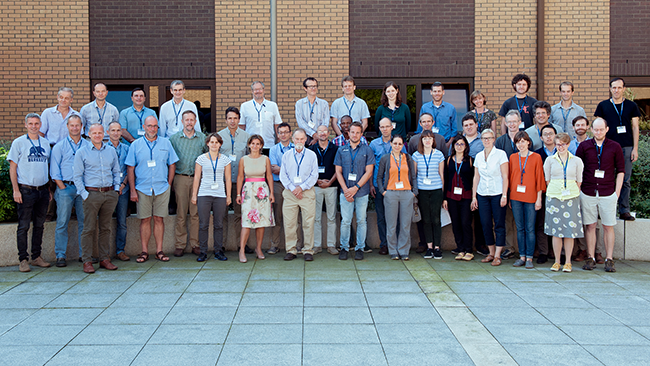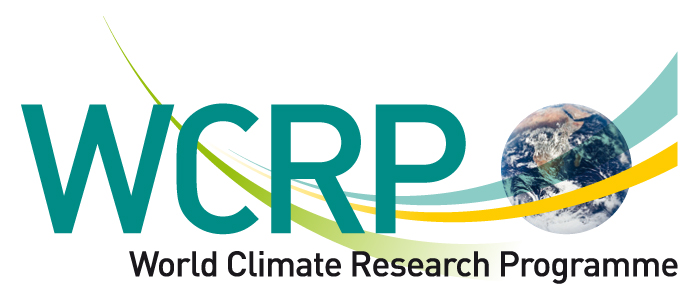ECMWF | Reading | 12-15 September 2016

Workshop description
The representation of drag processes is a major source of uncertainty in General Circulation Models. This ECMWF/WCRP/WWRP workshop, with the support of SPARC/WGNE/GASS, aimed to assess the current state of our understanding of drag processes and their impact on the large-scale circulation on timescales ranging from numerical weather prediction to climate. By drag processes we refer here to the terms entering the surface momentum balance, which include the surface stress associated with orographic gravity wave drag (wherever it is deposited). The workshop also aimed to review how these processes are represented in global models; discuss and sharpen the research questions to pursue in order to achieve substantial advances in this area; foster collaborations and stimulate further research addressing these questions.
The workshop was centred around the following themes:
- Underlying processes and their representation in models
- Impact of uncertainty associated with drag in NWP and climate models
- Representation of drag across scales: What are the implications of increasing resolution?
- Constraining drag processes through observations and fine-scale modelling
- Interpretation of tendencies/increments from NWP analysis and reanalysis
Brief outline
The workshop comprised 25 minute talks from invited speakers across 2 days; and working group and plenary discussions across 1.5 days.
Invited speakers included:
Norm McFarlane (University of Victoria)
Ayrton Zadra (Environment Canada)
Simon Vosper (Met Office)
Frederic Hourdin (LMD)
Ad Stoffelen (KNMI)
Jenny Lindvall (MISU)
Peter Lauritzen (NCAR)
Felix Pithan (U. Reading)
John Scinocca (CCCma)
Francois Lott (LMD)
Ulrich Achatz (Frankfurt University)
Francois Bouyssel (Meteo-France)
Isla Simpson (NCAR)
Mark Rodwell (ECMWF)
Working group questions
There were three working groups, focusing on the following aspects:
1. Theoretical aspects of drag impacts on the large-scale circulation
What do we and don't we theoretically understand about how drag affects the large-scale circulation? Which frameworks, specific questions or approaches can yield the largest progress? Is there recent theoretical work on the effects of complex orography on the flow, when various processes (turbulence, gravity waves, form drag, etc.) occur simultaneously?
How does the surface orographic drag affect the flow on different time scales?
Do we really know why enhanced drag leads to weaker cyclones/model activity in GCMs? If not, how can we find out?
What is the impact of the wind dependence of ocean drag on the large scale circulation?
2. Representation in models (parameterizations, anciliary files)
Would we expect different models with the same ancillaries and drag schemes to produce the same circulation?
To what extent do the dynamical cores and physics-dynamics coupling influence the circulation?
What is the best strategy for exploring the stability and wind dependence of orographic drag?
How do different modelling centres construct their resolved and sub-grid orography datasets (at different resolutions)? Is the pre-processing of the subgrid orography to separate the forcing data between different schemes (e.g. scales > 5km for flow blocking and GWD; smaller scales for PBL scheme) still used? What would be a meaningful way of comparing different techniques?
If the unresolved stress involves scales larger than the subgrid scale (as suggested by the recent studies of Vosper et al 2015,2016), how could the parametrizations take that into account? And how can we unambiguously define the resolved component of the stress of a model?
Do we expect parameterizations to be scale-adaptive, or should model tuning be resolution-
specific?
How can we better understand inter-model differences, both in terms of total drag and the partition of drag between the different schemes? What are the next steps for the 'WGNE Drag project'?
3. Constraining drag
Momentum fluxes are very difficult to observe at spatial and temporal scales relevant to large-scale models. What observable bulk quantities could be used as metrics instead, and what is the fingerprint of individual drag processes in changes of these metrics? How do changes in model settings and parameters impact these metrics in GCMs?
How to optimize poorly known parameters entering the parameterizations (e.g. land surface
roughness)? Can 'inverse modelling' using data assimilation techniques help?
Can we use observations, reanalysis and high-resolution simulations as 'ground truth' to constrain
the total amount of drag and/or the contributions from individual processes (both over land and
oceans)? Are high resolution simulations the best way to go forward?
What can we gain from existing datasets such as the DEEPWAVE results? What new observations
or model experiments are required?
Presentations
|
The WGNE Drag Project: Importance of and uncertainties in parametrizations of surface drag and momentum exchanges in weather and climate models Ayrton Zadra (Environment Canada) / Irina Sandu (ECMWF) |
|
|
Orographic drag parametrization - history and issues Norman McFarlane (University of Victoria) |
|
|
Some orographic effects on the large-scale circulation François Lott (LMD) |
|
|
From 1D to 4D: Towards a gravity-wave parameterization for NWP and climate models beyond the wave-dissipation paradigm Ulrich Achatz (University of Frankfurt) |
|
|
Trapped lee waves: a currently neglected source of low-level orographic drag Miguel Teixeira (University of Reading) |
|
|
On satellite scatterometer winds and how they compare with NWP model winds Ad Stoffelen (KNMI) |
|
|
Wind turning in the boundary layer Jenny Lindvall (MISU) |
|
|
Mountain wave attenuation in the stratosphere: a comparison between parameterizations, GW resolving simulations, and observations over New Zealand, the Andes, and the Himalayas Christopher Kruse (Yale) |
|
|
Climate model wind stress biases in the northern sub-tropics from a momentum balance perspective Isla Simpson (NCAR) |
|
|
Diagnosing errors in the momentum budget in NWP Mark Rodwell (ECMWF) |
|
|
Using ICON-LES to constrain drag in global simulations Martin Köhler (DWD) |
|
|
Evaluation of mountain drag schemes using twin regional simulations Stephen Garner (GFDL) |
|
|
Orographic drag on islands in the NWP “mountain grey zone” Simon Vosper (UKMO) |
|
|
Sensitivity of resolved and parametrized surface drag to changes in resolution and parametrization Annelize van Niekerk (University of Reading) |
|
|
Experience in creating orography ancillary files Nils Wedi (ECMWF) |
|
|
A comparison of parametrized momentum tendencies in global and regional models at Météo-France François Bouyssel (Météo-France) |
|
|
Advancements in Global Modelling at NCEP: Current and future plans Vijay Tallapragada (NOAA/NCEP) |
|
|
Recent developments in orographic drag parametrizations for CAM Julio Bacmeister (NCAR) |
|
|
Missing low-level drag causes climate model biases in jet streams, blocking and storm tracks Felix Pithan (AWI) |
|
|
The impact of orographic wave drag on the NAM response to greenhouse gas forcing – a cautionary tale John Scinocca (CCCma) |
|
|
Gravity Waves from Southern Ocean Islands and the Southern Hemisphere Circulation Chaim Garfinkel (Hebrew University) |
|
|
Small-scale orographic gravity wave drag in stable boundary layers and its impacts in synoptic systems and near surface meteorology Gert-Jan Steeneveld (University of Wageningen) |
|
|
GEOS-5 NWP experience with changes in parameterized drag Nathan Arnold (NASA/GMAO) |
|
|
Boundary layer dynamics control on the air-sea flux and SST in the tropics Frédéric Hourdin (LMD) |
|
|
Sensitivity of zonal-mean circulation to air-sea roughness Inna Polichtchouk (University of Reading) |
|
|
Jet responses to changed friction in idealized GCMs Maarten Ambaum (University of Reading) |
Scientific committee:
Co-chairs: Irina Sandu (ECMWF) and Felix Pithan (University of Reading)
Julio Bacmeister (NCAR)
Andreas Dörnbrack (DLR) Ted Shepherd (University of Reading)
Gunilla Svensson (MISU)
Ayrton Zadra (Environment Canada)



